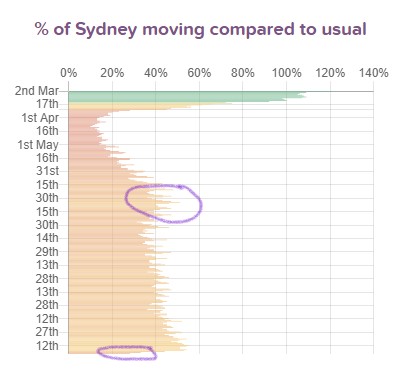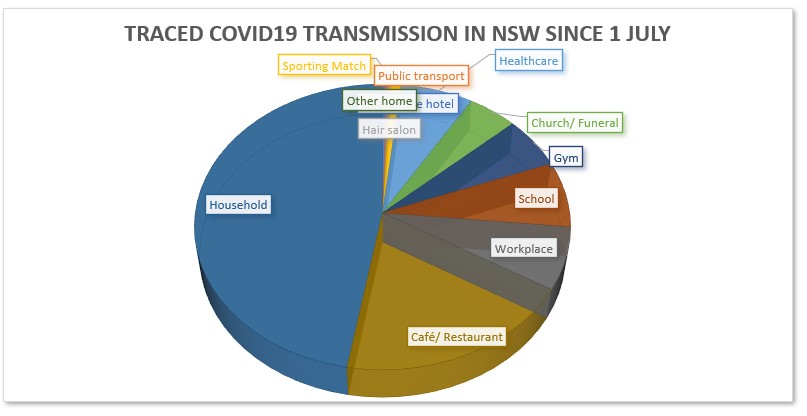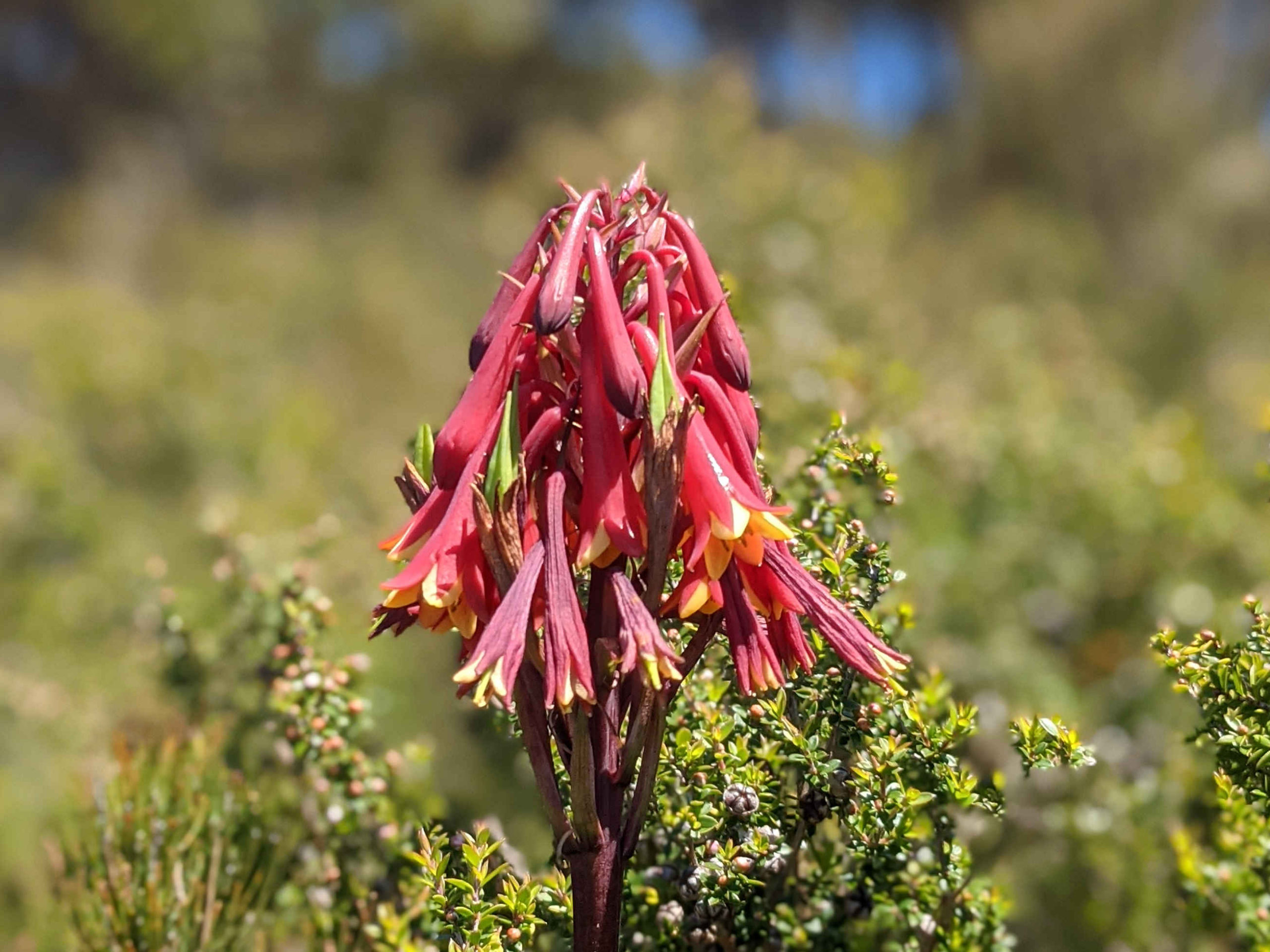How does NSW stack up against the Swiss Cheese respiratory virus pandemic defence? Pretty well, but there are a few things (including mandatory facemasks) that we could do better.
With Sydney in the midst of a new outbreak of Covid19 (for all my northern hemisphere readers, you’ll probably wish for our low numbers, but we are now up to 94 cases of locally acquired Covid19 in the last week and we are taking it pretty seriously) I thought it was worth looking at all the public health responses in NSW and how they are going.
You may have seen this graphic showing you how to think about pandemic defence from virologydownunder – created by Ian McKay from the University of Queensland. McKay has adapted a more generic safety model for Covid19 to show that no one response is enough – it is important to have as many as possible. All of these different responses are what add up to the rate of transmission (or not) of Covid19. It is a good response to those who suggest that [insert response of choice] isn’t perfect, so we shouldn’t adopt it. No defence is perfect, but the more we have, the less spread of disease will occur.

So where are we up to in NSW? In a general sense, we are mostly doing the right thing. Is it enough to squash our latest outbreak? Too early to tell, in my view.
- Physical distance – stay home if sick. This has improved in the last week. The Northern Beaches have been locked down, so no unnecessary travel outside the home, and the rest of Sydney has drastically reduced mobility.
 Here’s the citymapper mobility chart showing the mobility index in Sydney for this year (since 2 March).This index shows that in late June, early July, Sydney’s mobility peaked, at a point that it didn’t really get back to until November/December. And anecdotally, from wandering the CBD during those months, people were not only going out more, they were much happier going into crowded shops once they were out, in November and early December. But the other promising thing on this chart is that mobility in Sydney is now right down, with the latest index at 28%, a number not seen in Sydney since May.
Here’s the citymapper mobility chart showing the mobility index in Sydney for this year (since 2 March).This index shows that in late June, early July, Sydney’s mobility peaked, at a point that it didn’t really get back to until November/December. And anecdotally, from wandering the CBD during those months, people were not only going out more, they were much happier going into crowded shops once they were out, in November and early December. But the other promising thing on this chart is that mobility in Sydney is now right down, with the latest index at 28%, a number not seen in Sydney since May. - Masks – I still don’t understand why masks aren’t mandated in NSW. It seems a low cost response – even if it is not enforced, the probably of people following a law, as opposed to guidance is definitely higher. At least anecdotally, mask use has gone up around Sydney in the last week, particularly in the Northern Beaches.
- Hand hygiene – coughing etiquette, and avoiding touching your face – it doesn’t answer quite the same question, but this survey from the ABS looks at quite a few precautionary measures across Australia. Hand hygiene was the top precaution taken
In November, almost all (96%) Australians took one or more precautions in the previous week because of the spread of COVID-19. These included washing hands or using hand sanitiser regularly (93%)
- If crowded limit your time – I haven’t found evidence for this one, but my observation in and around Sydney’s CBD would be that this relaxed in November and December.
- Fast and sensitive contact tracing – the NSW Minister for Health, Brad Hazzard described NSW’s contact tracing as “diamond standard” – apparently that’s even better than “gold standard” – in less than a week, 94 positive Covid19 cases have converted into over 150 different locations where those who have been there are notified to get tested and self-isolate. And that doesn’t include private households, or other locations where all those there have been notified privately.
- Ventilation – outdoors – this is mixed. While some parts of Sydney have encouraged outdoor dining, there is little publicity or consideration of how good indoor ventilation is in considering the safety of a venue. Of course this is hard to measure, but in Japan, there is normalised testing for carbon dioxide indoors, which is a good proxy for how well ventilated a room is.
- Govt messaging and financial support – NSW has had more success with this than Victoria, as both sides of politics are working together here and not contradicting each other. The Northern Beaches has been declared a hotspot , which allows the federal government to provide support (such as financial support for those forced to self isolate by testing requirements).
- Quarantine and isolation – Australia is quarantining all overseas arrivals, and requiring isolation for locals diagnosed with Covid19 or waiting for test results. Anecdotally, NSW checks those isolating at home, so that majority of people do comply with the requirements. However, in Sydney, only the northern beaches is in lockdown. It remains to be seen whether that is enough for our fast and sensitive contact tracing to work.
- Vaccines – we have no approved vaccine in Australia as yet, although we expect to start roll out in the first quarter of 2021.
So overall, NSW has adopted some measure of most of these interventions. But we are yet to see whether they are enough to stop the spread of the current outbreak and if they are, how quickly the outbreak will be squashed.
All of these measures, together create an outcome – how much transmission occurs. Back in April I blogged about this measure – the Reff (R0). The key thing to note is if Reff is above 1, then the outbreak will spread. If it is lower than 1, it will eventually die out. The lower it is, the quicker cases will disappear. Despite all the measures we’ve taken, up until this week, the lack of physical distance and isolation in Sydney until this week probably meant transmission would occur. I’m hoping that the limited lockdown in the northern beaches and reduced travelling for the rest of Sydney will get it down below 1 for long enough to squash this outbreak.
The vast bulk of transmission of Covid 19 happens in households. I’ve updated my analysis of NSW’s contact tracing information (before the latest Northern Beaches outbreak). Nearly half the traced infections (which is more than 500 over the period) have come from households transmission.
And this recent meta analysis from around the world suggests that around 16% of all cases in the home will go on to infect someone else:
Findings In this meta-analysis of 54 studies with 77 758 participants, the estimated overall household secondary attack rate was 16.6%, higher than observed secondary attack rates for SARS-CoV and Middle East respiratory syndrome coronavirus. Controlling for differences across studies, secondary attack rates were higher in households from symptomatic index cases than asymptomatic index cases, to adult contacts than to child contacts, to spouses than to other family contacts, and in households with 1 contact than households with 3 or more contacts.
Meaning These findings suggest that households are and will continue to be important venues for transmission, even in areas where community transmission is reduced.
My family Christmas was going to be quiet this year anyway – so I’m not sacrificing all that much if guests are reduced or banned in households for the next week or two. So it is easy for me to suggest that good risk management is probably restricting guests in any household to a maximum of 10 or even fewer over Christmas and New Year in Sydney. If it wasn’t for Christmas being this week, that decision would almost certainly have already been made. But it will be very hard politically to make that call, and I’m glad I’m not the person who has to decide.
Links
This fascinating analysis of the spread of Covid19 in restaurants shows what gold standard contact tracing really looks like, and just how important ventilation (or lack of it) is in spreading Covid19:
First, just reading the study is an exercise in what it means to do a study really, really well, with the resources of a government that’s committed to generating useful information. They first found an index case (A) in Jeonju, a person with no history of overseas travel or travel outside Jeonju. They then used location data and found a single overlap with another known infection, case B. Once they identified case B and the location of the overlapping encounter, the restaurant, they went back and tested everyone who worked there, as well as the people who also overlapped with case B, the infector. They found one more infected person, case C. They went back to the restaurant and recreated the airflow and the conditions of the 30 minutes during which the infections happened.
They watched the CCTV footage to make sure there was no other interaction. They then undertook genome sequencing of the three patients to confirm that they were not likely to have different sources of infection. In other words, the testers determined that these three people weren’t just three infected people who just happened to be at the restaurant at the same time, but that this was a transmission chain..
I spent time with people from Melbourne this week – which gave me a much more vivid appreciation of the challenges of lockdown, even understanding the logic, the emotions are much tougher. This blog post gives a perspective from New Jersey – a part of the US (like many) where the education system has been virtual for almost all of 2020.
It’s not just the special ed community that regressed. My friends tell me about their college kids and family members, who shut themselves up in rooms back in March and aren’t coming out. While these individuals aren’t formally on the spectrum, they have social anxiety or just ordinary shyness. Their social skills are rusty, and now, they’re too afraid to leave their bedroom sanctuaries.
We’re going to have to clean up some serious mental health issues when this is all said and done.
My hope is that we put aside resources for the groups that have suffered the most. So, that means free, additional tutoring, therapy, and mental health support for low-income, or young or special needs students. I would also like to see financial support for local town recreation programs and libraries to organize clubs, meetings, and social gatherings.
We’ve been bowling alone for a year, and it’s just not healthy.
I hope that in our recovery in Australia in 2021, we think hard about how to rebuild community and mental health – not just with medical support, but with community building ideas like those that Laura suggests. When we are all able to get back together, maybe we can learn from Iceland.
As Inga Dóra says: “We learned through the studies that we need to create circumstances in which kids can lead healthy lives, and they do not need to use substances, because life is fun, and they have plenty to do—and they are supported by parents who will spend time with them.”
Life Glimpses
We had more than a month without unknown community transmission in NSW, and I, like many others, started to believe it was safe to go out. The 14th, 15th and 16th of December, for me, had lots of in person social interaction (with a combination of lunches, dinner, coffees…). I suspect many people were the same, judging by the number of people in the centre of Sydney. In fact our dinner venue was so popular that we could only stay 90 minutes so a new group could come in when we finished.
Unfortunately that means that there were a lot of people interacting all over Sydney just as Covid19 came back into the community, with the 16th of December the day the first cases in the Northern Beaches cluster tested positive for Covid19, and started reminding us all what exponential growth can look like.
So far, none of my events were places in the contact tracing list, but I can’t help refreshing it every time a new set of venues come out. And cancelling everything I had planned for this week.
Bit of Beauty
I managed a quick trip to Tasmania in early December, suddenly realising that if the borders were open I could take advantage of them. I feel incredibly lucky to have managed it, given the borders closed again a few days after I got home for those of us from NSW. I found this beautiful Christmassy flower on our longest and most spectacular walk.
I hope you manage to find bits of beauty wherever you are and however you are spending this festive season – summer or winter.


Hi, Being an ex-Avalon/Bilgola resident I feel guilty, but the numbers are coming down.
Whereas here the number increase and probably we will have a 3rd lockdown.
For the time being the winter forgot to come, today it was 22 degrees.
Merry Christmas, Happy Happy 2021
Thanks for your excellent explanations of the Covid stats during the year , Jennifer.
All the best for Xmas and the new Year.
JBean